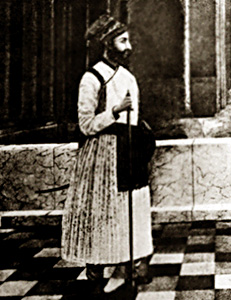 History of Chatra District states that this gateway of Jharkhand has a glorious past having an eminent chronological heritage. The land has been the silent spectator of the vicissitudes of the historical unfolding of human drama. It is stated that during Ashoka`s sovereignty (232 BC) the forest states too acknowledged the supremacy of the Magadhan Empire. It is said that Samudra Gupta marching through Chota Nagpur directed the first attack against the kingdom of south Kaushal in the valley of Mahanadi. Further, during Tughlaq`s reign, Chatra came in contact with Delhi Sultanate. The British rulers, for the first time, came in contact with these regions in 1769 AD.
History of Chatra District states that this gateway of Jharkhand has a glorious past having an eminent chronological heritage. The land has been the silent spectator of the vicissitudes of the historical unfolding of human drama. It is stated that during Ashoka`s sovereignty (232 BC) the forest states too acknowledged the supremacy of the Magadhan Empire. It is said that Samudra Gupta marching through Chota Nagpur directed the first attack against the kingdom of south Kaushal in the valley of Mahanadi. Further, during Tughlaq`s reign, Chatra came in contact with Delhi Sultanate. The British rulers, for the first time, came in contact with these regions in 1769 AD.
Chatra offers another fascinating chapter in the history of national movement in Bihar. The most important battle fought between the insurgents and the British in Chota Nagpur during the Sepoy Mutiny, 1857, was the `Battle of Chatra.` Chatra played a short but memorable small part on the historical canvas of the freedom movement
As per the history of Chatra District, it was previously the Divisional administrative headquarters of south Bihar. To the Muhammadan historians the whole of Chota Nagpur was in the tract which they knew as the Jharkhand or the forest country. It remained practically independent through out the Turko-Afghan period (1206 to 1526 AD) in India.
After the death of Aurangzeb in 1707 the Mughal Empire almost collapsed and Muhammad Shah was the Regent of the Mughal Empire from 1719 to 1748. Sir Buland Khan the then governor of Bihar who attacked Chota Nagpur in 1724. The new Governor of Bihar Aliwardi Khan advanced towards kunda in 1734 after defeating the rebellious zamindars of Tikari (Gaya). He attacked the Chatra fort and the fort was demolished.
The year 1765 AD opens a new epoch in the history of Chota Nagpur as on 12th of August 1765. Emperor Shah Alam II granted the Diwani of Bengal, Bihar and Orissa to the East India Company. As Chota Nagpur forms a part of Bihar, British East India Company was entitled to receive tribute or Ramgarh, Kharagdiha, Kendi and Kunda. Further, in the year 1799 a Munsif was appointed for the first time and was stationed at Chatra. Ranchi settlement, Report indicates that in the year 1778, an establishment of five companies was ordered to be stationed at Chatra. Governor General in Council thought that the district be continued to remain at Chatra and thus Chatra continued to be the district headquarters of Chatra District or Ramgarh Zila from 1771 to 1833 AD.
On 12th of December, 1912 Bihar and Orissa and Chota Nagpur were separated from Bengal by a Royal Proclamation to form a separate province. In the year 1914, Chatra was made a sub-divisional headquarters of the Hazaribagh district. Orissa was separated from Bihar in 1936. In 1991, Chatra became a separate district of Jharkhand.



















